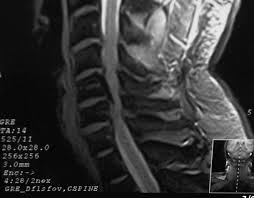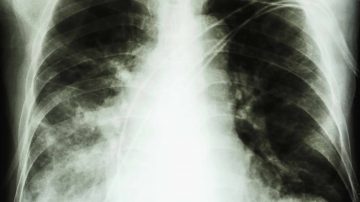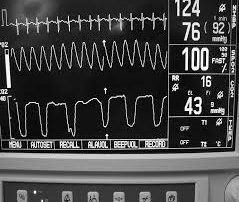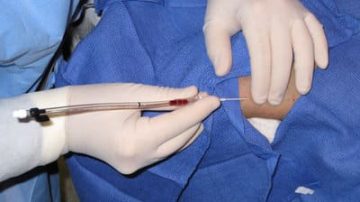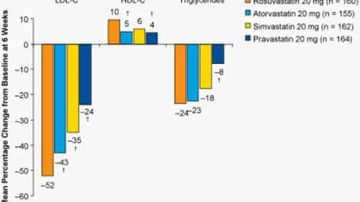Two systematic reviews and meta-analyses have demonstrated no long-term benefit for back pain, leg pain, or disability using epidural steroid injections for either sciatica or lumbar spinal stenosis. The first systematic review and meta-analysis in 2012 analyzed 23 trials of…
Read MoreThis is an excellent review on the diagnosis, triage, and management of both community-acquired pneumonia and healthcare-associated pneumonia (HCAP). This review also contains important information about clinical scoring tools to know which patients require admission, which patients require ICU care,…
Read MoreThis is a nice review on azithromycin to prevent chronic obstructive pulmonary disease exacerbations (COPD exacerbations). A recent Cochrane analysis and a retrospective VA study were both found that continuous azithromycin use decreased the incidence of COPD exacerbations in patients…
Read MoreThe American Association of Respiratory Care developed a clinical policy describing the benefit of continuous capnography during mechanical ventilation. This policy statement recommends continuous capnometry during mechanical ventilation for a number of reasons: 1. It confirms that the endotracheal…
Read MoreNoninvasive continuous arterial pressure monitoring using finger photoplethysmography is not quite ready for prime time. This technology is comparable to cuff pressures, but this technology is far too variable compared with invasive arterial blood pressure monitoring using an arterial line.…
Read MoreArterial lines are not completely benign. They can definitely cause catheter-related bloodstream infections. This study shows that arterial lines have a rate of bloodstream infection of about 1 in 1,000 catheter days. Femoral arterial lines have a higher rate of…
Read MoreThe American College of Emergency Physicians (ACEP) just published a new clinical policy on procedural sedation and analgesia in the emergency department, which revised the previous policy from 2005.1 Procedural sedation (conscious sedation) is extremely common in the ED and…
Read MoreLungs normally empty by passive recoil and the pressure in the alveoli at end-expiration is the intrinsic positive end-expiratory pressure (PEEP). During spontaneous respirations and with normal lungs, the PEEP is equal to atmospheric pressure. On a ventilator, auto-PEEP occurs…
Read MoreI am frequently asked by my residents, “What elements are needed for informed consent?” The first place to start is the definition of informed consent. Applebaum defined informed consent as “the process by which the treating health care provider discloses…
Read MoreMore Tags – HPC updates
Perioperative statin therapy has long been felt to confer cardiac protection during both cardiac surgery and major noncardiac surgery. Until recently the data have been scarce to definitively make claims in support of this belief. In 2004, Durazzo et al.…
Read MoreAcid suppression has long been associated with an increased risk of developing Clostridium difficile infection (CDI), having recurrent Clostridium difficile infection, and now has been shown to increase the complication rate and mortality from Clostridium difficile infection. This risk applies…
Read MoreMore Articles – Chest Tube, Emergency Procedures, FAST Exam, Medical General, medical procedures, Respiratory diseases
Pneumothoraces are a common problem in the ER and the ICU. The traditional screening test for a pneumothorax in the hospital is the chest radiograph; however, chest radiographs are not very sensitive in the setting of trauma and in ventilated…
Read MoreDr. Peter Rothwell has extensively studied the benefits of daily aspirin on cancer incidence, mortality, and the risk of metastasis. He has just published three articles in Lancet this month that demonstrates a significant reduction in cancer incidence, cancer-related deaths…
Read MoreMore Articles – Arterial line, Central line, Chest Tube, Emergency Procedures, medical procedures, Paracentesis
More Tags – HPC updates
Are you a hospitalist who would like to incorporate procedures into your practice but don’t feel competent or confident in your skills? Are you a hospitalist who does procedures so infrequently that you feel more comfortable referring your patients to…
Read MoreWhen I was in medical school in the early 1990’s, one of the principles that I learned was to never prescribe beta-blockers to patients with chronic obstructive pulmonary disease (COPD). We knew that stimulation of beta-2 receptors caused bronchodilation and…
Read MoreCategories
- ACLS (1)
- Arterial line (33)
- Cardiovascular diseases (77)
- Central line (55)
- Chest Tube (39)
- Dermatology (4)
- Emergency Procedures (139)
- Endocrinology (6)
- Endotracheal Intubation (36)
- Events (24)
- FAST Exam (12)
- Featured (113)
- Featured Procedure (42)
- Gastrointestinal diseases (32)
- Ginecology (3)
- Glidescope Intubation (21)
- Hematology (33)
- Hospital Procedures (85)
- Infections (32)
- Intraosseous line (8)
- King Tube (27)
- Laryngeal Mask Airway (18)
- Lumbar Puncture (36)
- Mechanical Ventilation (34)
- Medical General (95)
- medical procedures (258)
- Needle Decompression (6)
- Nephrology (11)
- Neurological diseases (12)
- Oncology (4)
- Paracentesis (32)
- Pericardiocentesis (3)
- Procedural Sedation (19)
- Respiratory diseases (85)
- RUSH Exam (8)
- Thoracentesis (37)
- Traumatology (24)
- Travel (27)
- Ultrasound-Guided Peripheral IV (13)

